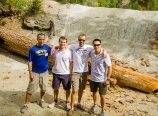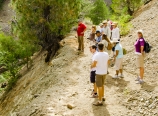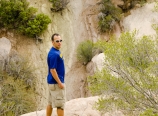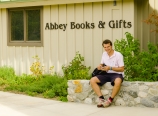
We’re having Alex and Nicolas visit from Europe as part the American Shoulder and Elbow Surgeons’ traveling fellowship. Chris arranged for us to take a tour of the San Andreas Fault, sponsored by the San Bernardino County Museum and led by Kathleen Springer.
Our first stop took us by Lost Lake off of the Cajon Pass. Kathleen, a geologist and curator at the museum, gave a series of lectures long the way. She explained that the lake formed when groundwater butted up against the fault and then surfaced to pool, forming a long skinny body of water. The same is true for Jackson Lake further up the road. Major quakes happen about every 150 years as the Pacific Plate moves against the North American Plate at a rate of 55 mm/year, but the last major one in the southern section stretching between the Cajon Pass and Salton Sea happened in the 1600s. Scientists predict that there is a 99% chance that a large quake will happen in the next thirty years.
At Wrightwood, we see some evidence from the trees, where the apices were topped at the time of the 1857 earthquake.
By Apple Tree Campground, the creek cuts through and erodes mounds of pulverized rock, particles that were ground up into flour by the San Andreas Fault.
We then hiked the one-mile loop at Devil’s Punchbowl. Kathleen pointed out that these used to be horizontal layers that were squeezed and tilted upward from pressure along the fault lines. From there, we visit the birthplace of paleoseismology at Pallett Creek. Here, scientists detail the age and time distribution of historic earthquakes.
After visiting St. Andrew’s Abbey, we return to the museum parking lot.








































